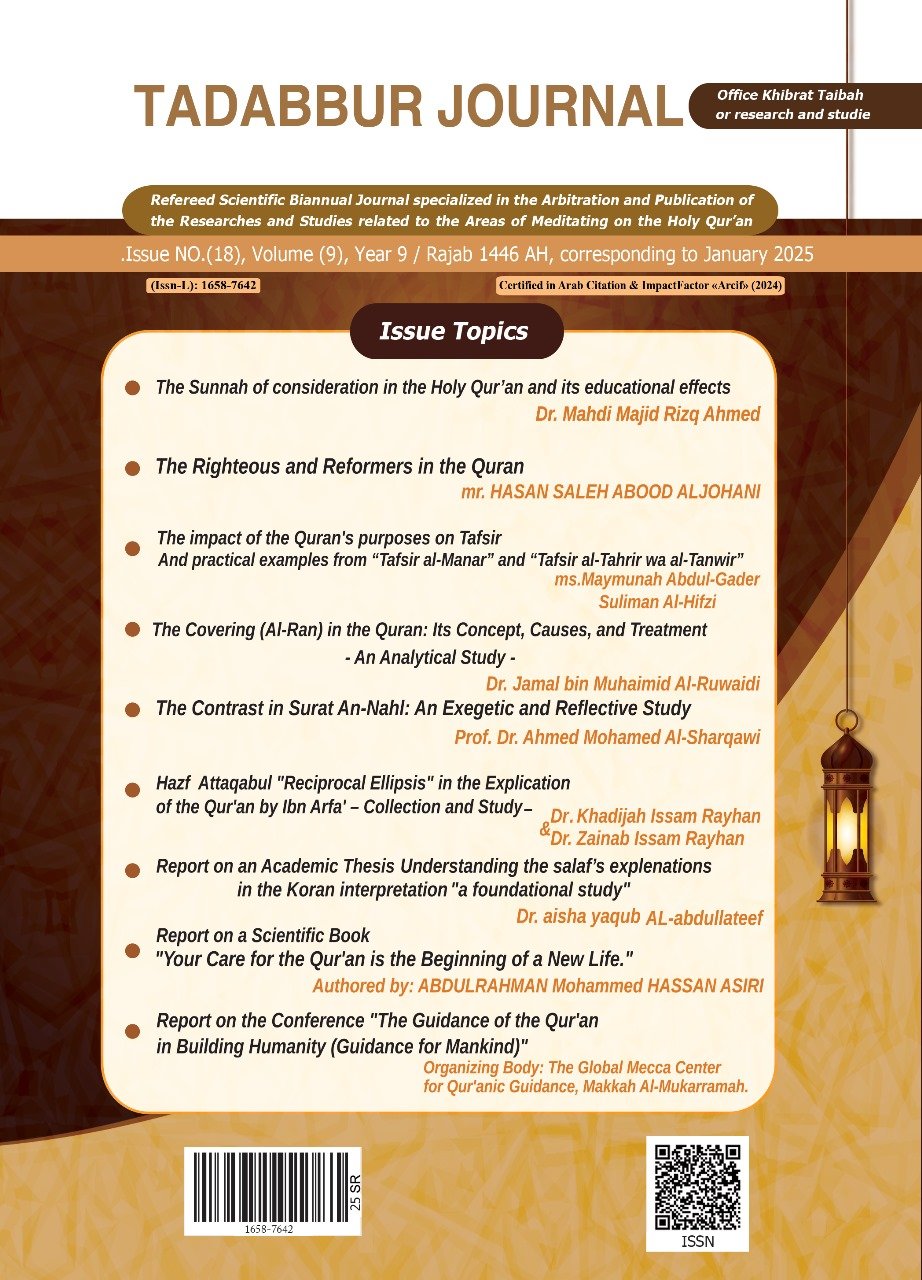Hazf Attaqabul "Reciprocal Ellipsis" in the Explication of the Qur'an by Ibn Arfa' – Collection and Study
Main Article Content
Abstract
Research Topic: Hazf Attaqabul "Reciprocal Ellipsis" in the Explication of the Qur'an by Ibn Arfa' – Collection and Study
Research Boundaries: The citations which Al-Imam Ibn Arfa' mentioned in his explication, providing a brief explanation of them, from the beginning of Surah Al-Fatiha to the end of the Quran, totaling (32) citations.
Research Objectives: The study aimed to introduce Al-Imam Ibn 'Arfah, and elucidate his methodology in his explication by discussing the technique of (Hazf Attaqabul) . It also aimed to examine the citations he mentioned in his explication, providing a brief explanation of them, from the beginning of Surah Al-Fatiha to the end of the Quran, totaling (32) citations.
Approach: The research adopted the inductive approach and the historical and descriptive methodology.
The most important research results and recommendations:
The study concluded with several results, including: that Al-Imam Ibn 'Arfah was among the first explicators to indicate the technique of "Hazf Attaqabul" and he declared it as an independent art form, providing multiple citations from the Quran. Ibn 'Arfah's explication stood out from others by naming this technique as "Hazf Attaqabul" while most explicators referred to it as Al-Ihtibak "Reciprocal Ellipsis".
Recommendations: Taking care of the manuscripts of Ibn `Arafa and scholarly, and meticulously editing them as well as paying attention to his explication of the Quran, as it contains many valuable sciences and issues worth researching, besides the study of "Hazf Attaqabul" (Reciprocal Ellipsis) among explicators.
Conclusion: Ibn 'Arfah’s methodology in presenting evidence of "Hazf Attaqabul" varied between briefness, elaboration, detail, and generality, as his explication was sort of notes written down by his students. Each piece of evidence had its own significance and context, differing from others, and some of them served as answers to questions raised by his students.
Downloads
Article Details
Conference Proceedings Volume
Section

This work is licensed under a Creative Commons Attribution-NonCommercial 4.0 International License.
Indicating to the intellectual property, copyrights, and open access right:
According to the Budapest Initiative 2002; tadabbur Journal, which is issued by Khibrat Taibah For Research and Studies in Medina, provides free open access to its publications, and applies the Creative Commons license:
Attribution- Non-Commercial 4.0 International (CC BY-NC 4.0) for the works it publishes from peer-reviewed scientific research and reports, which are freely available on the Internet, and which allows any user to read, download, copy, and distribute (Convert), print, search, or create links to the full texts of the journal’s research and publications, and analyze them in an automatic manner for discovering them, sending them as software data, or using them for any other legal purpose, without financial, legal, or other technical barriers beyond those related to Internet access.
It also highlight that the only barrier to reproduction and distribution, and the only role of copyright in this field, is the necessity of granting the authors of the journal’s research and reports and the publisher the journal; Control over their works, and the right to official recognition and reference citations.





